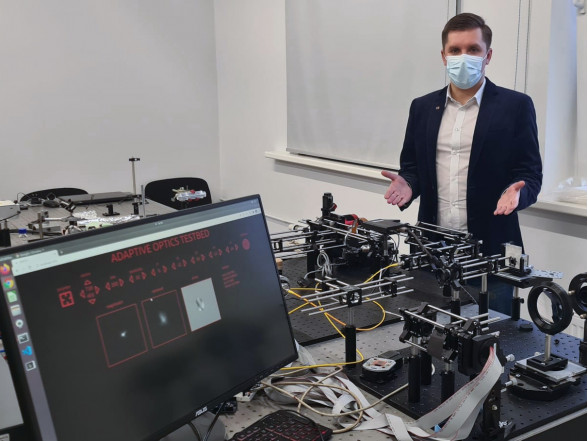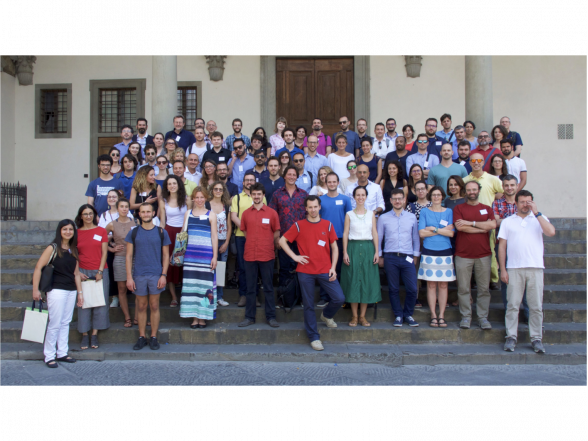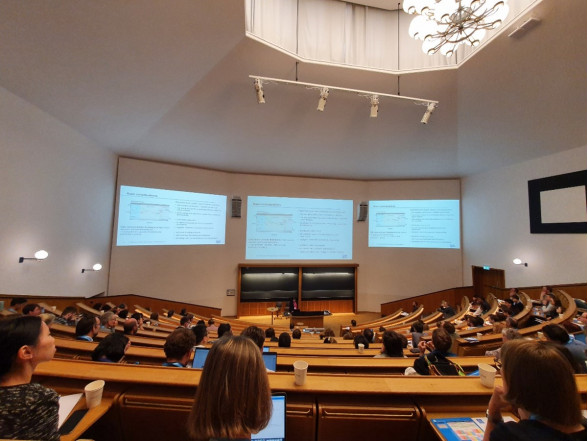ISSP UL’s Laboratory of Visual Perception will cooperate with the Portuguese partner Lusospace Ltd in implementation of the European Space Agency (ESA) project "Feasibility of phase retrieval adaptive optics for Satellite-Ground optical communication". Within the scope of the CAMART2 project, opportunities and infrastructure have been developed for the successful realization of this project.
The aim of the project is to understand and test whether the wavefront sensor developed by ISSP UL could be used in wireless optical communication - i.e. “Free space optical communications” (FSOC). This means the transmission of gigabit data between two satellites, or a satellite and a ground station, outperforming the methods currently used in its application and quality. As the atmospheric turbulence affects the speed and quality of data transmission between a ground station and satellites, adaptive optics, such as a wavefront sensor, could help to reduce this atmospheric turbulence, ensuring more stable data transmission. This project corresponds to feasibility and demonstration activities aimed at preparing for participation in other ESA programs, such as ScyLight, in which Latvia participates or will participate in the near future.
This project’s idea initially came from the commercialization project “New generation wavefront sensors based on the method of coded diffraction patterns” financed by the Investment and Development Agency of Latvia and implemented at the ISSP UL. During the course of the project, researchers from the Laboratory of Vision Perception developed new generation of solutions for measuring and correcting the turbulence of the atmospheric wavefront. The new generation wavefront sensor was presented during the European Photonics Industry Consortium (EPIC) virtual tour at the ISSP UL. The video of the tour available here.
Ģirts Ozoliņš, the business consultant of the project, confirms: “With this project, not only our laboratory, but also the ISSP UL has opened a new page in space technology research. We are happy to share our experience and contacts so that anyone with ideas and technological implications can apply for other ESA projects. We plan to develop the application of the wavefront sensor further. Therefore, to test the prototype of the FSOC terminal in the real environment (space), it is planned to participate in the next calls of ESA projects, establishing cooperation with larger industry players such as Thalis Alenia, Lokheed Martin and others.”
ESA is an international organization with 22 Member States from Europe. Latvia signed an Association Agreement with ESA on June 30, 2020. The mission of ESA is to build and develop European space capabilities and to ensure that investments in space bring benefits to European citizens and industry. ESA employs around 2,200 scientists, engineers, IT specialists and administrative staff from all ESA Member States.
LusoSpace is a high-tech engineering solutions company with a multidisciplinary team of top-level engineers that designs, develops, prototypes, integrates and tests the most advanced and innovative technological systems and components, because it has developed state-of-the-art technological expertise in the most demanding sector there is: the Space Industry.



